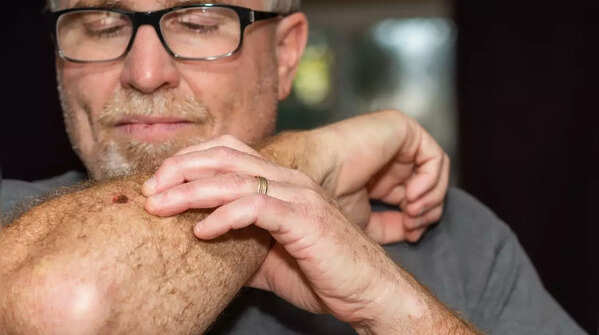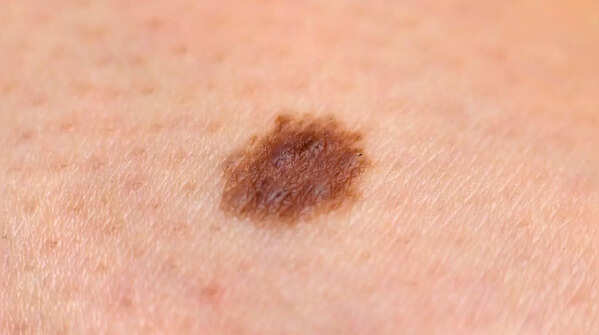Skin cancer is a prevalent form of cancer globally, often manifesting through subtle skin changes like new moles or minor alterations. Early detection significantly improves treatment outcomes. Recognizing potentially cancerous spots is crucial. Here’s what to look for.

The ABCDE method is a valuable tool for detecting melanoma, a serious type of skin cancer.
Any mole exhibiting these signs warrants a visit to a dermatologist.

Skin sores or scabs that repeatedly heal and return, or simply refuse to heal, can be an early indicator of basal or squamous cell carcinoma. These sores often present as pink, red, or slightly scaly patches and may bleed or ooze. If a sore persists for over three weeks or recurs in the same location, medical evaluation is essential. Persistent wounds, particularly on the face, arms, or scalp, should be examined promptly.

Moles should typically be painless and stable. A mole that begins to itch, becomes tender, bleeds, or develops a crust requires careful attention. These symptoms can indicate inflammation or structural skin changes and may signal a more serious condition than a typical mole. Consultation with a skin specialist is advisable.

Skin cancers can emerge as new growths rather than originating from existing moles. These may include small lumps, shiny bumps, or rough patches, especially on sun-exposed areas. Any such new formations should be examined by a skin specialist.

If the color of a mole begins to change or spread to the surrounding skin, or if the mole develops fading edges, it could indicate melanoma. This irregular pigment spread suggests potential growth and should be evaluated promptly. Regular comparison of moles over time, possibly with the aid of photographs, can help identify changes indicative of skin cancer.
Newer articles
Older articles
 Esha Gupta Sets Record Straight: Actress Addresses Hardik Pandya Dating Rumors
Esha Gupta Sets Record Straight: Actress Addresses Hardik Pandya Dating Rumors
 Google Maps to Boost Navigation Accuracy with Fused Orientation Provider API
Google Maps to Boost Navigation Accuracy with Fused Orientation Provider API
 Global Vaccination Rates Plunge: Millions of Children Now Vulnerable to Preventable Diseases
Global Vaccination Rates Plunge: Millions of Children Now Vulnerable to Preventable Diseases
 Rishabh Pant: Greg Chappell Hails India Star as Cricket Revolutionary
Rishabh Pant: Greg Chappell Hails India Star as Cricket Revolutionary
 Skin Cancer Alert: How to Identify Suspicious Moles and Early Warning Signs
Skin Cancer Alert: How to Identify Suspicious Moles and Early Warning Signs
 Gavaskar Calls for Kuldeep Yadav's Inclusion in Second Test Amid Bumrah Fitness Concerns
Gavaskar Calls for Kuldeep Yadav's Inclusion in Second Test Amid Bumrah Fitness Concerns
 Is Daily Pooping a Must? Understanding Bowel Regularity and When to Worry
Is Daily Pooping a Must? Understanding Bowel Regularity and When to Worry
 Suryakumar Yadav's Sports Hernia: Understanding the Injury, Recovery, and Risk Factors for Athletes
Suryakumar Yadav's Sports Hernia: Understanding the Injury, Recovery, and Risk Factors for Athletes
 Vijay Sethupathi Apologizes Amid Controversy Over Son Surya's Debut Film 'Phoenix' and Alleged Video Removal Pressure
Vijay Sethupathi Apologizes Amid Controversy Over Son Surya's Debut Film 'Phoenix' and Alleged Video Removal Pressure
 Install Baccarat Hack Tool: The Secret to Winning
Install Baccarat Hack Tool: The Secret to Winning